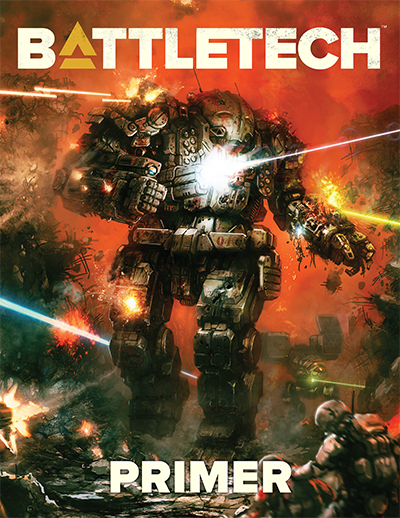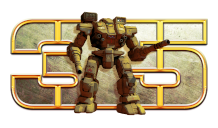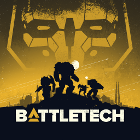- Home
- New To BattleTech?
- MUL
- Forums
- News
- Books
- Shrapnel
- Universe
- Downloads
- Characters
- Community
- Errata
- Links
- Gallery
A Time of War
—Excerpt from Humanity’s Destiny (first year geopolitical curriculum text, condensed by Misha Auburn from Manifest Destiny: Humanity’s Star Empires, by Misha Auburn, Commonwealth Press, 3067/3054)
For almost a thousand years, humans have journeyed into the far reaches of space, colonizing thousands of worlds and forming starspanning nations. From these grew the five vast star empires that make up the Inner Sphere.
Inner Sphere
General term used to describe a region of space roughly one thousand light-years across, composed of more than two thousand populated planets, with Terra (Earth) at the center. This area is further divided into geopolitical regions, where one power or another holds sway. For most of the centuries since humankind took to the stars, the vast majority of these worlds have belonged to one of the five Great Houses. Smaller powers have come and gone over this same time period. Any world or geopolitical power outside the Inner Sphere is said to lie in the Periphery, considered the frontier of the known universe.
—Encyclopedia Galactica
But the Inner Sphere was divided. Its ruling dynasties warred constantly over colony worlds with valuable resources. These titanic struggles led to the development of BattleMechs: gigantic, humanoid battle machines bristling with lethal weapons. From the twenty-fifth century onward, these walking tanks ruled the battlefields. BattleMechs and their skilled pilots changed combat forever.
As the price of conflict grew, the Inner Sphere tired of war. In 2571, the five ruling Houses joined together with the Terran Hegemony in the Star League, a federation led by a Hegemony First Lord and served by its own army: the Star League Defense Force. For nearly two hundred years, the Star League brought the Inner Sphere peace and prosperity.
In 2751, the sudden death of its First Lord left the Star League in the care of a child. Young Richard Cameron ruled in name, but the real power lay with the five Council Lords, each a sovereign of the original five Great Houses. Ambitious and distrustful, they plotted against one another, while a Machiavellian prince from the Periphery named Stefan Amaris wormed his way into Richard’s trusting heart. In 2766, Amaris assassinated the young First Lord and took control of the Star League in a bloody coup d’etat.
The Star League Defense Force, commanded by the brilliant General Aleksandr Kerensky, refused to accept Amaris’ rule. For thirteen years, they fought him in a bitter civil war that was the largest conflict yet fought by humanity. Kerensky’s forces won, but at a terrible price. In the chaos that followed, the Council Lords were each determined to step in as First Lord. Despite Kerensky’s efforts to hold the failing Star League together, it dissolved amid mutual hostility in 2781.
Unable to halt the impending conflict between the five Great Houses, Kerensky appealed to his soldiers to join him in leaving the Inner Sphere. Nearly eighty percent of the Star League army heeded Kerensky’s call to build a new Star League far beyond the explored universe. In 2784, Kerensky and his followers abandoned their homes and headed into uncharted space, presumably never to return.
War followed war in the wake of Kerensky’s dramatic departure. For nearly three centuries, the Houses of the Inner Sphere fought in vain for the right to rule over all humanity. These Succession Wars brought ever-shifting alliances and cost the Inner Sphere precious, irreplaceable technology. Constantly maneuvering for position—including the grand alliance of Houses Davion and Steiner signed in 3022 that would eventually lead to the formation of the fearsome Federated Commonwealth—the House Lords assumed that the most dangerous enemy they would ever face was each other.
They were wrong.
Even as the Inner Sphere was blowing back its technological and industrial base almost a thousand years, Kerensky’s followers built a new society in the harsh environs beyond known space. They developed a rigid caste system, designed to produce the ultimate warriors. For nearly three centuries, the separate castes of Kerensky’s Clans were unified by one burning ideal: that when the time was right, they would return home and conquer the Inner Sphere. They would become the saviors of humanity, rebuilding the Star League in their own image.
In 3048, the warlord Khans of the Clans decided the time had come to launch their invasion. With their powerful ’Mechs and MechWarriors, they drove straight toward Terra, the birth world of humanity.
Faced with a common enemy, the empires of the Inner Sphere united against the threat, establishing a new Star League. Finally victorious in 3060, the Star League halted the Clan invasion. A new era of peace beckoned, but it was not to be. Before long, war once again swept through every House and Clan, with the most vicious fighting centered around the FedCom Civil War between Houses Davion and Steiner.
Following the FedCom Civil War, the leaders of the Great Houses met, declared their Star League a sham and disbanded. The pseudoreligious Word of Blake—a splinter group of ComStar, the protectors and controllers of interstellar communication—had been on the verge of joining the Star League in fulfillment of their ancient prophecies. Cheated of their dream, they took swift vengeance and launched the Jihad: an interstellar war that would ultimately pit every faction against each other and even against themselves.
 BattleTech is a science-fiction “space opera”: a factional, militarized universe set in the thirty-first century, a future where humanity has spread to the stars and spawned titanic interstellar empires, each nation controlling hundreds of worlds across a region of space stretching a thousand light years and beyond.
BattleTech is a science-fiction “space opera”: a factional, militarized universe set in the thirty-first century, a future where humanity has spread to the stars and spawned titanic interstellar empires, each nation controlling hundreds of worlds across a region of space stretching a thousand light years and beyond.
Initially published over thirty years ago as a tabletop board game, BattleTech has gone on to become one of the gaming industry’s most important and longest-lasting science-fiction universes.
Be sure to check out the latest BattleTech Releases and the Coming Soon page for the newest BattleTech products.







